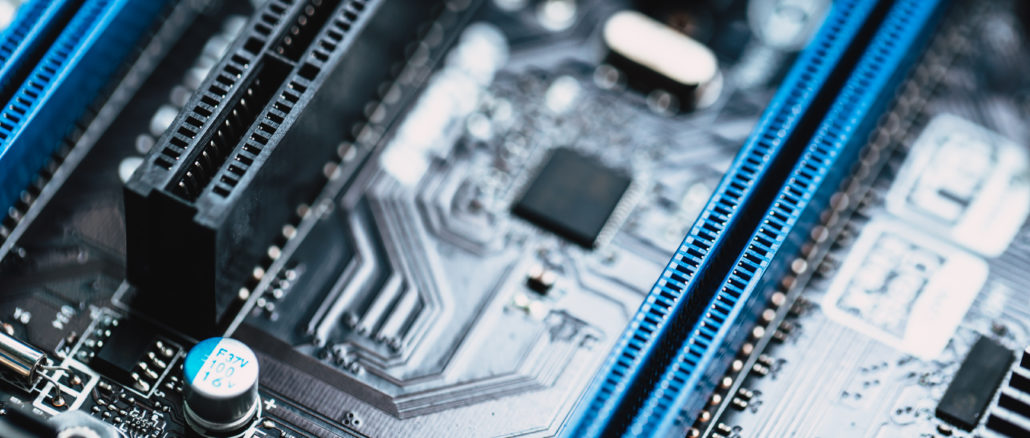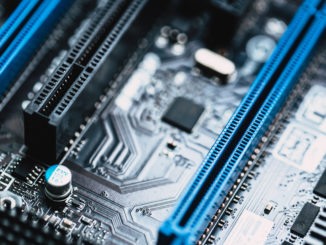
PCI-SIG, the organization that oversees the roadmap for the critical PCI-Express peripheral attachment specification, is continuing to keep to its three-year drumbeat for releasing the next iteration of the interconnect spec and already has its sights on the one after that, expected to be released in 2028 and appear in devices in 2030 or so.
The group this week said that the PCI-Express 7.0 spec has been finalized and sent out to members, with it apparently already starting to appear in some proofs-of-concept (POCs) and likely to see wider adoption in devices and systems before the 8.0 spec is realized. In addition, it takes two to three years for the spec to be tested and implemented into the myriad systems that use the interconnect, including servers, desktops and laptops, storage systems, GPUs, and network cards.
And that three-year schedule isn’t likely to change. Getting to a new spec in a three-year timespan is challenging enough, according to PCI-SIG president Al Yanes.
“In general, I/O bandwidth has doubled in three years and this is another proof point,” Yanes told us this week. “PCI-Express 7.0 has proved that. It takes three years to develop a specification. It takes three years for innovation. It takes three years for feedback on the previous technology. It takes three years for a return on investment for folks’ products. This is our sweet spot, and we’re able to achieve it.”
Two years ago, we at The Next Platform argued that the organization needed to accelerate its roadmap to reduce the timeframe to two years to match the cadence of CPU and GPU makers for releasing their newest products – and that cadence is being pushed faster by the rapid adoption and innovation around AI – and network switch card makers for their offerings.
Richard Solomon, the PCI-SIG vice president, told journalists last year that he and other organization executives have heard the desire for a faster development cycle but that it takes all of three years to get the spec out, run it through a six-month preliminary test phase, get silicon based on it out, and get system makers to test products for compliance with the new spec.
PCI-Express 7.0 Arrives
This year is a case in point, according to Yanes. Even as PCI-Express 7.0 is released to members, the organization’s official list of companies that successfully integrated the 6.0 spec won’t come until the end of the year, he said, adding that “it’s not just release specification, but you have to nurse it along as well if you want a wide adoption and successful wide adoption.”
That said, PCI-SIG was able to hit its targets for 7.0. It’s going to double the per-lane data-transfer rate of 6.0 – doubling the speed is a constant goal for the organization – jumping from 64 GT/sec per second to 128 GT/sec in each direction. The speed is four times that of PCI-Express 5.0. The speed keeps in mind the needs of such data-focused workloads like AI and machine learning and the upcoming quantum computing systems, according to the organization.
Speed And Efficiency
It also improves the power efficiency of the spec – using the same PAM4 modulation technique and 1b/1bFlit-based encoding for data transmission that came with 6.0 – and will be backward compatible with previous PCI-Express standards.
The organization told The Next Platform that “while it is always challenging to double the speed, the PCI-Express 7.0 specification updates were more evolutionary than PCI-Express 6.0 specification since we are reusing PAM4.”
“The capabilities of our technology … can go from the mobile, handheld, low power, to the automotive, to storage, everywhere, ubiquitous,” Yanes said. “A great accomplishment for the work groups and our members on being able to achieve this technology that can go wide, can go small, can go different generations. Not everybody’s going to need PCI-Express 7.0, but we still have PCI-Express at the lower clock rates as well. That range allows us to support this range of opportunity.”
While PCI-SIG boasted the launch of the 7.0 spec and the next steps for it, work on 8.0 and other features is underway. While Yanes said the pathfinding for the next-gen spec has begun, there wasn’t more information to be had, though the expectation is that the speed again will double that of 7.0, which would push it to 256 GT/sec and over the signaling line, enabling 1 TB/sec for an x16 sert of lanes.
The group also seems to be laying the groundwork for optical interconnects. Along with the 7.0 spec, it unveiled the Optical Aware Retimer Engineering Change Notice (ECN), which amends the PCI-Express 6.4 specification and the PCI-Express 7.0 specification to include a PCI-Express solution based on retimer, which is a device like an IC chip that can extend the distance of a PCI-Express link by re-transmitting the signals.
It could open the door to a standardized way to implement PCI-Express technology via optical fiber, according to Yanes.
The Optics Of Optical
“The reason we’re doing this ECN is this is the framework,” he said. “This is resolving a lot of the challenges for optical. The infrastructure is in place. The projection is going to be end of the year – late end of the year. That’s the hope and the goal. They got a lot of participation. They’re trying to make sure that the direction and how much do they need support of all the optical options. It’s a little tricky, But that’s a very successful story so far.”
Optical Aware Retimer ECN, which is aimed at datacenter, AI, and cloud workloads, allows for a variety of optical technologies to be used for optical interconnections between PCI-Express 6.4 for switches, root-complex, and endpoint silicon and extends the reach across racks and pods, according to the organizations. It also opens up multiplexing and data mapping of electrical and optical domains and allows for more compact environment than does electrical copper.
Copper is still common in datacenters, but there are a lot of vendors working on silicon photonics. In March, we wrote about Nvidia targeting silicon photonics for both InfiniBand and Ethernet, with other companies like Broadcom, Cisco Systems, IBM, Intel, and STMicroelectronics also pushing here.







